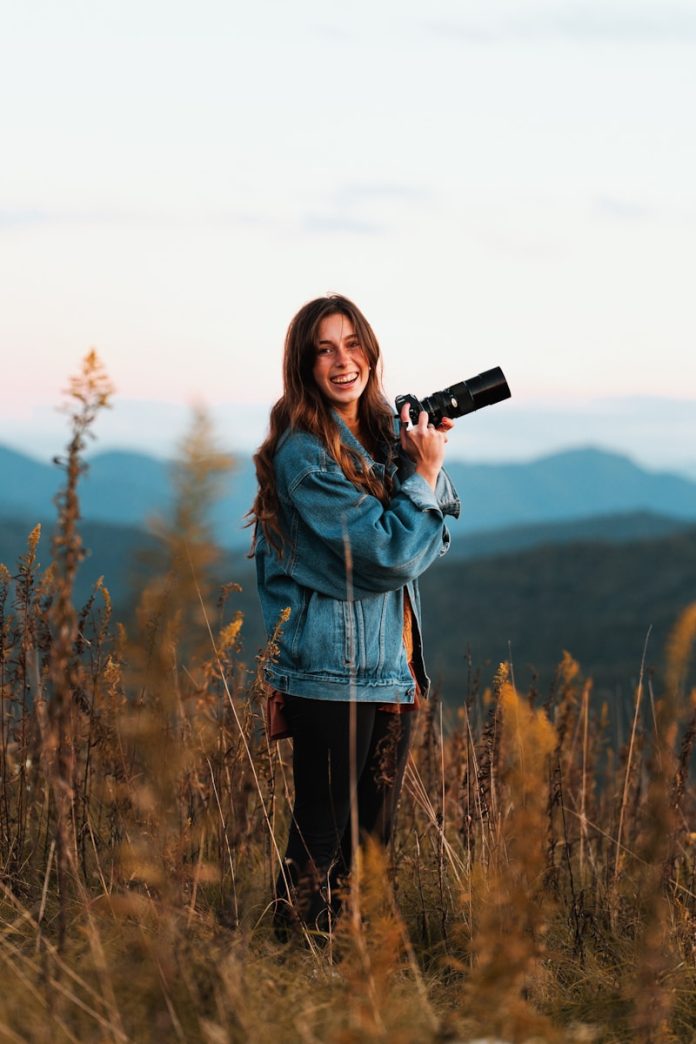Fashion photography is often associated with glamorous runway shots, magazine spreads, and celebrity portraits. The public-facing side of this industry gives the impression that fashion photographers lead luxurious lives, surrounded by stylish models and iconic brands. However, the reality is far more intricate, involving creativity, technical expertise, and a great deal of hard work. A day in the life of a fashion photographer is often unpredictable, requiring them to juggle multiple responsibilities, coordinate with teams, and adapt quickly to the ever-changing demands of the fashion world.
In this essay, we’ll take a closer look at what it’s really like behind the lens of a fashion photographer, examining the preparation, challenges, and rewards that come with each photoshoot. From setting up the studio to capturing that perfect shot, the life of a fashion photographer is as dynamic as it is demanding.
- The Early Start: Preparing for the Shoot
A day in the life of a fashion photographer typically starts early, especially if the shoot is planned for a specific time of day, like the golden hour—those precious minutes when the light is soft and ideal for outdoor shots. Preparation is key to ensuring everything runs smoothly, and this involves a variety of tasks before even picking up a camera.
Pre-Shoot Planning: Before the day of the shoot, fashion photographers usually engage in a detailed planning process. This includes consultations with clients, stylists, models, and creative directors to discuss the concept and overall vision for the shoot. The photographer must carefully consider the clothing, locations, and lighting to ensure that each element will align with the brand’s aesthetic and the specific look that’s being requested.
Many photographers will review mood boards, which are visual representations of ideas, to help refine their concept. They also create shot lists—detailed guides of each frame they want to capture during the shoot. If the shoot involves multiple locations, the photographer will often scout these sites beforehand to plan for lighting, angles, and backdrops that will complement the outfits.
Gathering Equipment: Fashion photographers rely heavily on their equipment to deliver high-quality images. This involves more than just a camera. They must choose the right lenses, tripods, reflectors, and lights for the shoot. If the shoot is in a studio, the photographer may bring several types of lighting equipment to create the perfect ambiance. Reflectors, softboxes, and diffusers are used to control shadows and highlight the clothing, ensuring it looks flattering and vibrant.
Packing for the shoot also involves checking the technical gear, making sure everything is charged, and ensuring that all backup equipment is available. A fashion photographer often has to make sure their team’s gear is also ready, including props or styling items.
- The Photoshoot: Capturing the Perfect Moment
When the day of the shoot arrives, the photographer must arrive at the location early to set up. Fashion shoots often involve a considerable amount of behind-the-scenes work before any photos are taken. Once the location is set, the photographer must work closely with the entire team, which can include stylists, makeup artists, assistants, and the models themselves.
Setting Up the Scene: Whether it’s a glamorous studio shoot or an outdoor location, setting up is a key part of the photographer’s job. The photographer needs to ensure the lighting is just right, and sometimes this means spending hours adjusting and fine-tuning different light sources until the setup matches their vision. For outdoor shoots, this may involve managing natural light and positioning the model in a way that enhances the clothing and scenery.
Directing the Model: Fashion photography requires a great deal of direction, and it’s up to the photographer to help the model embody the mood and style that the shoot demands. This involves more than just telling the model to smile or strike a pose. A skilled fashion photographer knows how to direct the model with precision, guiding them on their posture, facial expressions, and the subtleties of each movement to convey the desired look.
This is where the photographer’s expertise in visual storytelling comes into play. They have to know exactly what kind of shot will capture the essence of the clothing and the overall concept of the shoot. Some poses will highlight the textures of the fabrics, while others will showcase the fit of the clothes or the way light interacts with the material. The photographer may experiment with different angles, compositions, and focal lengths to achieve the perfect frame.
Staying Flexible: Even with all the planning and preparation, no photoshoot goes exactly as expected. Weather conditions, lighting changes, and unanticipated technical issues can arise, so photographers need to be adaptable. They must be prepared to pivot and make creative decisions on the fly, which is a hallmark of the fashion photography profession.
Fashion photographers also must maintain a keen eye for details. Ensuring the clothing is styled correctly, the model’s hair and makeup look fresh, and there’s no distracting background clutter all requires constant attention. For a fashion photographer, each frame is meticulously crafted, and every detail must be considered.
- Post-Shoot: The Editing and Refining Process
Once the shoot is complete, the job of a fashion photographer is far from over. While the photos may look perfect on camera, post-production editing is a critical step in the process. A photographer’s expertise in editing can make the difference between an average shot and a striking, high-fashion image.
Editing the Photos: Fashion photographers spend significant time reviewing the images taken during the shoot. After selecting the best shots, they move to the editing stage. This can involve everything from color correction and retouching to compositional adjustments. Retouching can include removing blemishes, smoothing out textures, and enhancing the color balance to ensure that the clothing looks as good as it does in person.
For fashion photographers, retouching isn’t just about making things look perfect; it’s about elevating the overall aesthetic. The editing process is an art in itself, where the photographer manipulates the photo to create the desired mood and tone, which is in line with the brand or magazine’s visual identity.
Delivering the Final Product: Once the images are edited, the photographer delivers them to the client. This could be in the form of a gallery, a digital portfolio, or directly through a file-sharing service. Fashion photographers often need to consider the format in which the images will be used, whether for print, social media, or advertisements. Each platform requires different specifications, and ensuring the images meet these demands is part of the photographer’s job.
The photographer also engages in constant communication with the creative director or client during this stage to confirm that the final images meet the brief. Adjustments and further revisions may be requested, and it’s the photographer’s responsibility to address these until the client is fully satisfied.
- The Business Side of Fashion Photography
While the creative and technical aspects of fashion photography are undoubtedly important, it’s also crucial to understand the business side of the profession. Fashion photographers often need to balance their creative pursuits with administrative tasks, such as contracts, invoicing, marketing, and client negotiations.
Building a Portfolio and Reputation: A photographer’s portfolio is their most important marketing tool. It showcases their style, versatility, and skills to potential clients. Over time, photographers build their portfolios through collaborations with brands, agencies, models, and other creatives. Networking and social media play a significant role in promoting their work and expanding their reach.
Client Relationships: Establishing strong relationships with clients is vital in fashion photography. Photographers must work well with creative directors, stylists, brands, and agencies. Their ability to collaborate and adapt to different creative visions is what leads to repeat business and long-term success in the industry.
Managing a Career: Fashion photographers also must juggle their work schedule, often dealing with tight deadlines and quick turnarounds. They need to stay organized, manage contracts, and keep track of their bookings. Many photographers work as freelancers, which requires additional business skills, such as invoicing, tax management, and negotiating terms with clients.
- Challenges and Rewards of Fashion Photography
The career of a fashion photographer is not without its challenges. The competition is fierce, deadlines are often tight, and the pressure to consistently produce top-quality work can be overwhelming. Additionally, the long hours and the need for constant creative innovation can lead to burnout.
However, the rewards of the profession are equally substantial. The ability to create visually stunning images that resonate with people around the world is incredibly fulfilling. Fashion photographers often have the chance to work with talented teams, travel to exotic locations, and collaborate with renowned brands and designers. The work is dynamic and always evolving, offering endless opportunities for growth and creativity.



